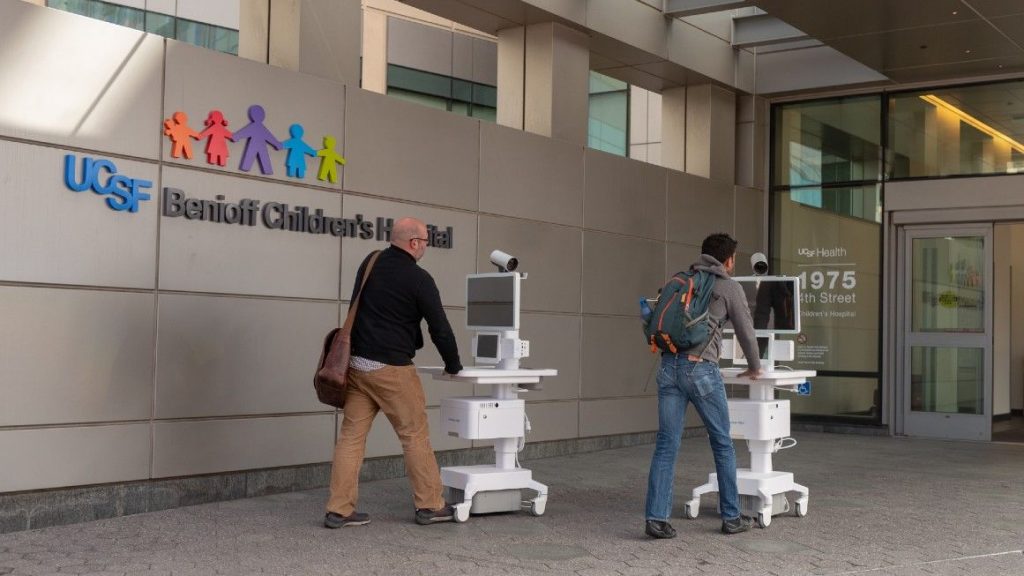Physicians Should Be Allowed To Practice Across State Lines—and Not Just During a Pandemic
4 min read
The COVID-19 pandemic is straining all the country’s health care resources right now—including the supply of physicians. In response, nearly all 50 states are temporarily suspending regulations to allow physicians to practice across state lines and to encourage the use of telemedicine, which lets patients interact with doctors remotely via audio or video. While these measures will alleviate some of the pressures caused by the coronavirus, physician shortages won’t go away after the virus subsides.
Medical professionals are typically licensed on a state-by-state basis, so a doctor licensed in one state can’t practice in another without receiving an additional license. The patchwork of licensing requirements across states is a major obstacle to the use of telemedicine because physicians are generally only permitted to provide telemedicine services to patients in states where they are licensed.
States are recognizing the cost of these onerous regulations in light of the current crisis. Over the past few weeks, governors and medical boards in every state except for Alaska, Arkansas, and Minnesota have temporarily suspended their licensing rules to allow out-of-state physicians to work in their state. Most of them have also waived restrictions on the use of telemedicine across state lines. Taken together, these actions will help ensure patients have adequate access to care.
Some states are in greater need of physicians than others. On average, there are roughly 263 physicians per 100,000 people in the United States. But in Massachusetts, there are 449 physicians compared to just 191 in Mississippi. Moreover, the number of COVID-19 cases is expected to peak at different times in each state, so the peak demand for health care providers will vary. Allowing physicians to practice across state lines grants them flexibility to help where they are needed most.
Eliminating barriers to the use of telemedicine will also help contain the coronavirus’s spread. Most people infected with COVID-19 don’t require hospitalization but may still need to seek medical advice; telemedicine enables them to do so without risk of spreading the virus further. At the same time, patients who do not have COVID-19 symptoms but have another medical problem requiring them to consult with a physician or specialist will be able to receive some amount of care without risking exposure.
Beyond the current crisis, telemedicine has the potential to connect patients with specialists across the country. Telemedicine may also reduce inefficiencies that result from schedule gaps, unexpected appointment cancellations, and the uneven geographic distribution of physicians.
A growing, aging population is expected to generate a national shortage of nearly 220,000 physicians by 2032. As with the current distribution of physicians, shortages will not be evenly distributed across states. Regional projections from the Department of Health and Human Services (HHS) indicate that the Southeast will have a shortage of approximately 13,860 primary care physicians as early as 2025, while the Northeast will have a surplus of around 810 physicians. Telemedicine offers a solution, but states will need to reform their licensing laws for the technology to reach its full potential.
One way for states to reduce barriers for out-of-state physicians is to join the Interstate Medical Licensure Compact (IMLC), an agreement between 29 states and the District of Columbia that allows physicians to more easily receive licensure in each of the member states. The licensing process is expedited through information-sharing among compact member states. Physicians receive a “letter of qualification” from their home state, or State of Principal Licensure (SPL), that is used to verify their qualifications for licensure in other member states.
This approach has limitations because its efficacy is dependent on widespread adoption and implementation. Of the 29 states that have passed IMLC legislation, only 24 are currently acting as SPLs and issuing licenses to physicians from other states. Oklahoma and Vermont are issuing licenses to out-of-state physicians, but are not acting as SPLs. Georgia, Kentucky, and Pennsylvania have passed IMLC legislation but have unfortunately delayed implementation.
Alternatively, states can simply recognize licenses from other states—something they are already doing to address the current crisis. Last year, Arizona became the first state to pass universal license recognition for most occupations including physicians. However, the reforms only apply to people relocating to Arizona, not to out-of-state telemedicine providers. Meanwhile, Florida recently created a registration process that allows out-of-state providers to practice telemedicine but does not allow them to provide in-person care without first obtaining a Florida license. Combining these approaches would go a long way toward addressing current and future shortages.





